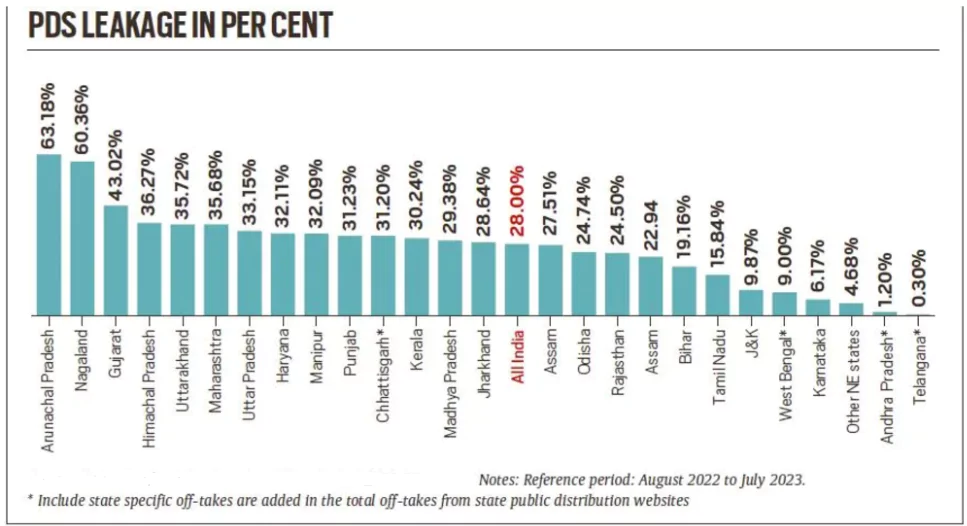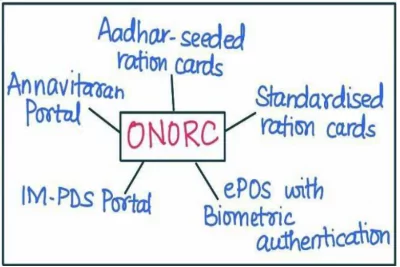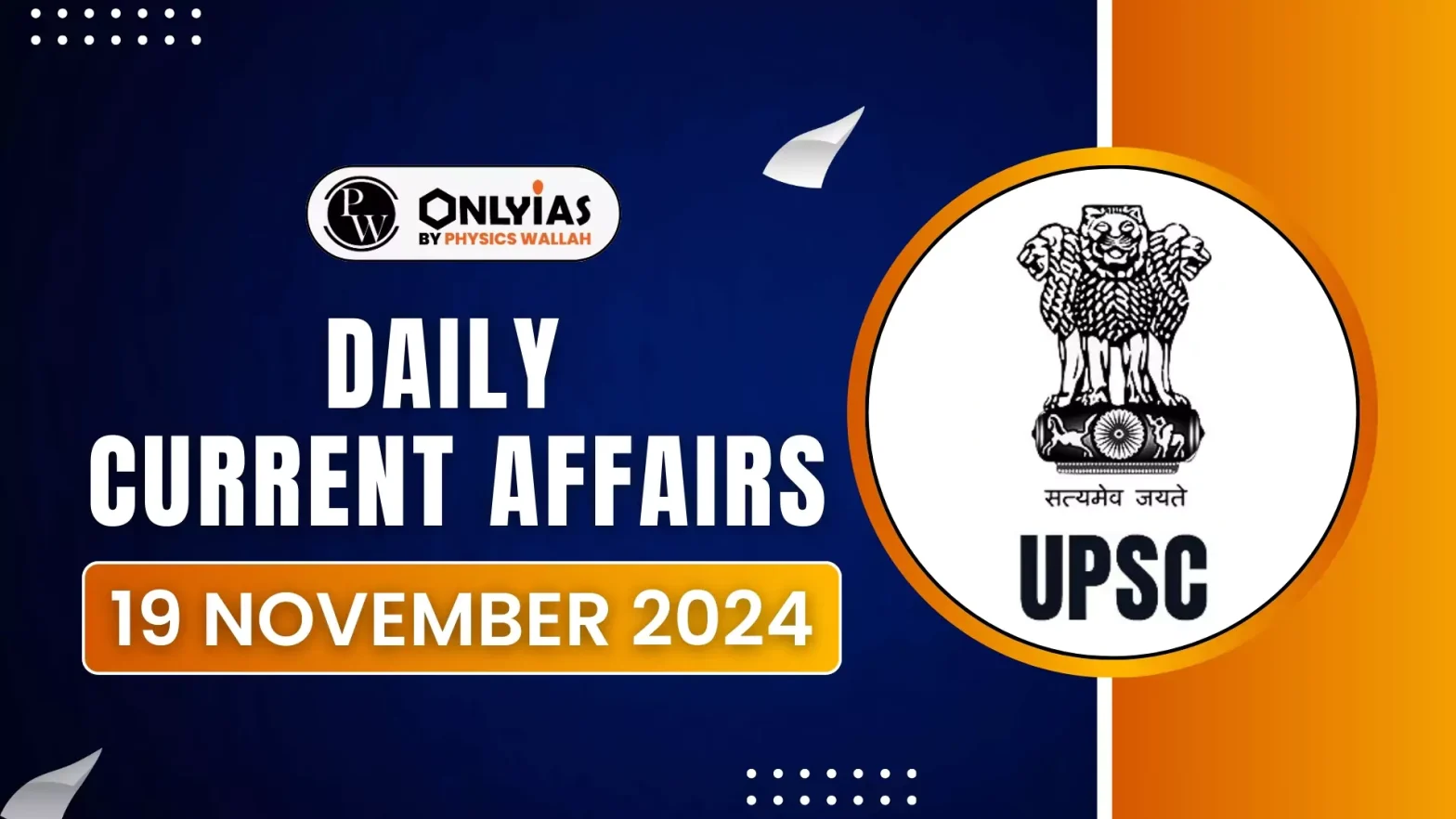The annual fiscal cost of leakage in the distribution of food grain to more than 800 million beneficiaries under the free rations scheme is estimated at Rs 69,000 crore, according to ICRIER study.
Indian Council for Research on International Economic Relations (ICRIER)
- Establishment: Founded in 1981, the Indian Council for Research on International Economic Relations (ICRIER) is an independent public policy organization.
- Motto: Its guiding motto is “Linking India with the world.”
- Focus Areas: ICRIER conducts research in key areas like agriculture, climate change, the digital economy, economic growth, jobs and gender, trade, industry, and investment.
- Role and Contribution: It provides insightful ideas to accelerate India’s inclusive development and serves as a bridge between academia and policy-making.
- Advisory Role: ICRIER acts as a trusted advisor to governments, corporates, multilateral organizations, and foundations.
|
Enroll now for UPSC Online Course
Key issue Highlighted in the ICRIER Study
- Excessive Coverage and Economic Burden
- Current Coverage under the NFSA and PMGKAY: It extends to 57% of the population (813.5 million people out of a population of about 1.43 billion in 2024).
- Criticism: Critics argue that providing free food to over 800 million people is economically unsustainable.
- Leakages in PDS
- A significant issue in the PDS is the leakage of food grains, which prevents them from reaching intended beneficiaries.
 Extent of Leakages: Approximately 28% of the rice and wheat distributed under the PDS does not reach beneficiaries, resulting in a loss of 19.69 million metric tonnes (MMT) of grains annually (2022-23).
Extent of Leakages: Approximately 28% of the rice and wheat distributed under the PDS does not reach beneficiaries, resulting in a loss of 19.69 million metric tonnes (MMT) of grains annually (2022-23).
- This translates to a financial loss of ₹69,108 crore per year.
- State Variations: States such as Arunachal Pradesh, Nagaland, and Gujarat have reported some of the highest rates of leakages.
- Improvements and Challenges: The introduction of Point-of-Sale (PoS) machines at Fair Price Shops has reduced leakages from 46% in 2011-12 to 28% in 2022-23.
- Nutritional Security Deficiency
- The current cereal-focused food subsidy system does not adequately address India’s nutritional challenges.
- Malnutrition Indicators: According to the National Family Health Survey (NFHS) 2019-21:
- 35.5% of children under five are stunted.
- 19.3% are wasted.
- 32.1% are underweight.
- Cereal-Focused Subsidy: The existing subsidy prioritises cereals, with limited focus on nutrient-rich foods such as pulses, vegetables, and fruits, which are crucial for overcoming malnutrition.
- Fiscal Impact:
- The food subsidy expense for FY23 was Rs. 2.72 lakh crore, reduced to Rs. 2.12 lakh crore in FY24 (RE).
- Savings from reduced leakages could be redirected toward agricultural investment and rural development.
More Issues with PDS in India
- Ghost Beneficiaries and Fraud: Despite the introduction of Aadhaar linkage, duplicate and ineligible beneficiaries remain a challenge.
- Between 2013-2021, 47 million bogus ration cards were cancelled.
- Targeting Errors: Errors in identifying beneficiaries result in the exclusion of eligible households and the inclusion of non-poor families.
- Storage Losses: The lack of adequate infrastructure leads to 10% of foodgrains being wasted annually due to spoilage.
- Corruption: Corruption at the level of Fair Price Shops (FPSs) leads to practices like under-weighing and overcharging, which reduce the effectiveness of PDS.
Pradhan Mantri Garib Kalyan Anna Yojana (PMGKAY):
- PMGKAY is a food security welfare scheme announced by the Government of India during the COVID-19 pandemic in India.
- Origin: The scheme was announced in 2020 as part of the existing Pradhan Mantri Garib Kalyan Yojana (PMGKAY). Initially it was scheduled to run for the period between April and June 2020.
- Nodal Ministry for PMGKAY: The scheme is run by the Department of Food and Public Distribution under the Ministry of Consumer Affairs, Food and Public Distribution. The Ministry of Finance is the nodal ministry.
- Working of PMGKAY: The scheme will provide food grains to the poorest citizens through the Public Distribution System, to all the priority households (ration card holders and those identified by the Antyodaya Anna Yojana scheme).
- Under the scheme, 5 kg of rice or wheat per person and 1 kg of dal will be given to each family holding a ration card. This is above the monthly entitlement under the NFSA.
|
About Public Distribution System (PDS)
- The Public Distribution System (PDS) was initially designed to manage food scarcity by distributing essential foodgrains at affordable prices.
- Over time, it has evolved into a critical component of India’s food security strategy, supplementing household needs for foodgrains but not meeting the entire requirement.
Check Out UPSC CSE Books From PW Store
Management of PDS
- PDS operates under the joint responsibility of the Central and State/UT Governments:
- Central Government: Handles procurement, storage, transportation, and bulk allocation of foodgrains through the Food Corporation of India (FCI).
- State Governments: Oversee distribution, identification of eligible families, issuance of ration cards, and supervision of Fair Price Shops (FPSs).
- The system primarily distributes wheat, rice, sugar, and kerosene, though some states include additional items like pulses, edible oils, and salt.
History of Public Distribution
- Public Distribution in the 1960s
-
- PDS emerged during the interwar period but gained prominence in the 1960s amid food shortages.
- Initially focused on urban areas, its reach expanded to tribal and poverty-stricken regions post-Green Revolution.
Antyodaya Anna Yojana (AAY)
- Launched in 2000 to target the poorest of the poor, initially covering 1 crore families.
- Provided foodgrains at highly subsidised rates: ₹2/kg for wheat and ₹3/kg for rice.\
- The allocation increased from 25 kg to 35 kg per family per month in 2002.
|
- Revamped Public Distribution System (RPDS)
- Launched in 1992, RPDS aimed to improve PDS accessibility in remote and poverty-stricken areas.
- Covered 1,775 blocks, focusing on regions under Drought Prone Area Programme (DPAP), Integrated Tribal Development Projects (ITDP), and Desert Development Programme (DDP).
- Provided additional ration cards, Fair Price Shops, and storage facilities while distributing essential commodities like tea, pulses, and soap.
- Targeted Public Distribution System (TPDS)
- Introduced in 1997, TPDS shifted focus to the poor. States identified beneficiaries based on poverty estimates, targeting Below Poverty Line (BPL) families.
- Initially, 72 lakh tonnes of foodgrains were allocated for 6 crore poor families annually.
- Key developments:
- In 2000, foodgrain allocation for Below Poverty Line (BPL) families increased from 10 kg to 20 kg per month at 50% of the economic cost.
- The allocation for Above Poverty Line (APL) families was retained at economic cost, but the Central Issue Prices (CIP) for BPL and Antyodaya Anna Yojana (AAY) beneficiaries were kept subsidized.
- The number of BPL families increased to 652 lakh in 2000, based on updated population projections.
Relevance and Need for PDS in India
- Food Security and Poverty Alleviation
- PDS ensures food access for India’s vulnerable populations, particularly as 129 million Indians live in extreme poverty (World Bank, 2024).
- Acts as a safety net during crises like the COVID-19 pandemic, where schemes like Pradhan Mantri Garib Kalyan Anna Yojana (PMGKAY) provided free foodgrains to 800 million people.
- Price Stabilization and Market Regulation
- PDS mitigates price volatility by maintaining buffer stocks and controlling market fluctuations.
- For instance, in 2022-23, FCI released 34.82 lakh tonnes of wheat to stabilize market prices.
- Agricultural Support
- Provides assured markets and Minimum Support Prices (MSP), supporting farm incomes and rural livelihoods.
- Nutritional Security
- Some states now distribute fortified rice, pulses, and millets to combat malnutrition.
- For example, Tamil Nadu provides fortified rice, while Odisha promotes millet distribution through its Millets Mission.
- Social Equity and Regional Balance
-
- PDS supports marginalized communities, particularly in remote and tribal regions.
- Initiatives like One Nation One Ration Card (ONORC) enhance portability for migrant workers.
Check Out UPSC NCERT Textbooks From PW Store
One Nation One Ration Card (ONORC) scheme

- The One Nation One Ration Card (ONORC) scheme is a national program that allows ration card holders to access food security benefits from any Fair Price Shop (FPS) across India.
- The scheme was launched in 2018 by the Department of Food & Supplies and Consumer Affairs, Ministry of Consumer Affairs, Food & Public Distribution.
- Portability: ONORC allows ration card holders to access benefits across state and district lines.
- Food security: The scheme helps ensure food security for all, including migrant workers and their families.
- Mobile app: The government has launched a mobile app called “MERA RATION” to help people make the most of the ONORC scheme.
|
Measures Taken by the Government to Improve PDS
-
Technology-Driven Reforms
- End-to-End Computerization: The government has undertaken the digitization of ration cards and beneficiary databases to eliminate duplicate and bogus cards.
- Aadhaar Integration: Aadhaar seeding has been made mandatory for ration cards to curb ghost beneficiaries and plug leakages in the system.
- Electronic Point of Sale (ePoS) Devices: ePoS devices have been introduced at Fair Price Shops (FPSs) for biometric authentication of beneficiaries during foodgrain distribution.
- Supply Chain Automation: Online systems have been implemented to track the movement of foodgrains from procurement centres to FPSs.
-
Portability of Ration Cards
- One Nation One Ration Card (ONORC): Launched in 2019, this initiative allows beneficiaries, especially migrant workers, to access their PDS entitlements anywhere in India.
- ONORC has been rolled out across all states and UTs, improving access and portability.
-
Strengthening Infrastructure
- Modernization of Storage Facilities: The government has invested in constructing modern silos, cold storage facilities, and warehouses to reduce storage losses and ensure better quality of foodgrains.
- Doorstep Delivery: Several states have implemented doorstep delivery of foodgrains to FPSs, ensuring timely availability of stocks.
- The Delhi government announced a plan for doorstep delivery of PDS rations in 2018.
-
Introduction of Nutritional Reforms
- Fortification of Foodgrains: The government has introduced fortified rice in the PDS to address micronutrient deficiencies.
- The Government of India has included food fortification in the National Nutrition Mission- POSHAN Abhiyan to reduce the prevalence of anemia and malnutrition.
-
Grievance Redressal Mechanisms
- Toll-Free Helplines: States have established toll-free helplines to address complaints regarding PDS operations.
- Social Audits: The government encourages social audits to improve transparency and accountability in the functioning of FPSs.
- Financial Incentives for FPS Dealers: To improve the functioning of Fair Price Shops, dealers are provided with financial support in the form of higher margins, which helps them maintain operational efficiency.
-
Emergency Response Mechanisms
-
- Mobile PDS Units: Some states have introduced mobile units to cater to beneficiaries in remote and disaster-affected areas.
|
Reforms proposed by ICRIER
- Targeted Free Food Coverage: Free food benefits should be restricted to the poorest 15% of the population.
- Beneficiaries above the extreme poverty line should pay at least 50% of the MSP for grains, thereby reducing subsidy costs and making the system more sustainable.
- Plugging Leakages in PDS: To address leakages, the use of PoS machines should be expanded across all Fair Price Shops.
- Additionally, implementing DBT will ensure that food subsidies are transferred directly into beneficiaries’ accounts, reducing corruption and inefficiency.
- States like Bihar and West Bengal have achieved significant reductions in PDS leakage over the past decade.
- In Bihar, leakage dropped sharply from 68.7% in 2011-12 to just 19.2% in 2022-23. West Bengal saw a decrease from 69.4% to 9% over the same period.
- Nutrition-Oriented PDS: Reforms should focus on making the PDS more nutrition-oriented:
- Conversion of Fair Price Shops: Selected Fair Price Shops should be converted into “Nutrition Hubs” offering a diverse range of food items, including eggs, pulses, millets, and fruits, alongside cereals.
- Digital Food Coupons: Beneficiaries should receive digital food coupons that can be redeemed at these Nutrition Hubs, promoting dietary diversity.
Enroll now for UPSC Online Classes
Way Forward
- Digital Transformation: The system can be improved through end-to-end digitalization using technologies like blockchain and IoT for real-time monitoring and AI-based analytics to detect pilferage.
- Modernized Infrastructure: The government should invest in temperature-controlled silos and automated quality control systems to reduce storage losses.
- Strengthening ONORC: Improved interstate coordination and real-time tracking of migrant populations can ensure better portability of ration cards.
- Nutritional Security Focus: The inclusion of millets, pulses, and fortified foods in the PDS can address India’s nutritional challenges. E-Rupee vouchers for nutrition can also be introduced for vulnerable groups.
- Crisis Preparedness: Emergency mobile PDS units should be established to cater to populations affected by natural disasters or pandemics.
- Investment of Savings into Agriculture and Nutrition: Savings from subsidy rationalisation should be redirected towards:
-
- Agricultural R&D: Investments should focus on developing high-yield, climate-resilient, and nutrient-rich crop varieties.
- Climate-Resilient Farming Practices: Emphasis should be placed on sustainable agricultural practices to mitigate the effects of climate change.
- Farmer Skill Enhancement Programs: Skilling programs for farmers should be prioritised to improve agricultural efficiency and income.
Conclusion
A restructured PDS with targeted free food, DBT for leakages, and diversified nutrition options is critical for addressing poverty and malnutrition effectively. Food subsidy savings must focus on investments that offer long-term returns and improve overall food and nutritional security.
![]() 19 Nov 2024
19 Nov 2024

 Extent of Leakages: Approximately 28% of the rice and wheat distributed under the PDS does not reach beneficiaries, resulting in a loss of 19.69 million metric tonnes (MMT) of grains annually (2022-23).
Extent of Leakages: Approximately 28% of the rice and wheat distributed under the PDS does not reach beneficiaries, resulting in a loss of 19.69 million metric tonnes (MMT) of grains annually (2022-23).
